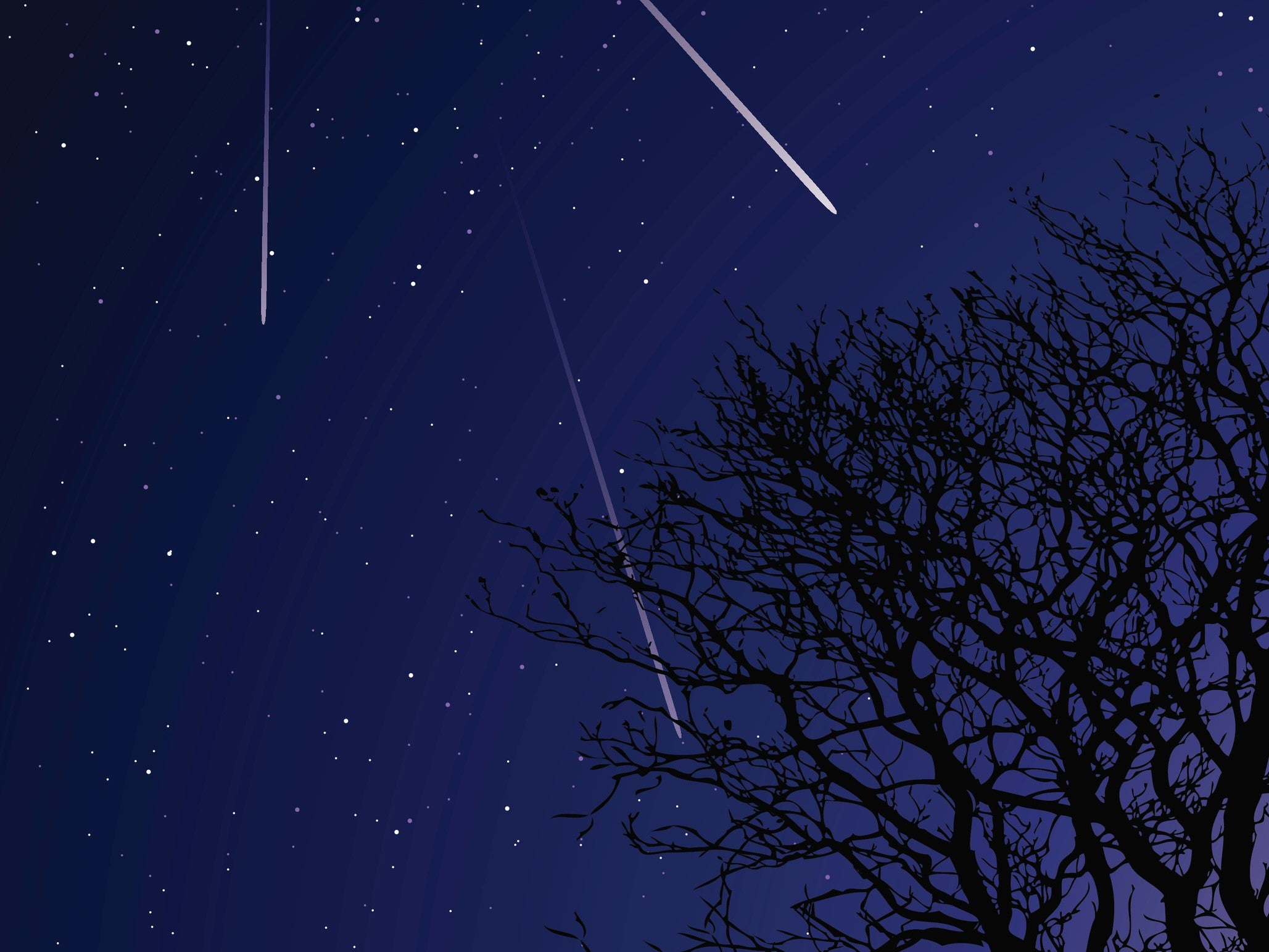Perseids 2023: Meteor beacon offers unique way to observe spectacular shower over UK
First-of-its-kind project captures meteorites at any time of the day, in almost any weather

A group of amateur radio enthusiasts have set up a beacon in the UK that allows anyone to observe meteors as they burn through the Earth’s atmosphere.
The UK Meteor Beacon project uses radio signals to identify meteorites as they pass through a 400 km-wide section of sky over England and Wales. The data is then displayed on a live online feed, with meteors appearing as blue streaks that emit a ping followed by a trailing pitch.
The system captures more than 100 meteors every hour, even during times of relatively low activity. For the upcoming Perseid meteor shower, which peaks on 12 August, the frequency could be in the region of thousands per hour as Earth passes through the tail of the Swift-Tuttle comet.
Unlike optical astronomy, the use of radio signals mean that meteors can be observed in nearly any weather conditions at all hours of the day and night. It also means that the system can pick up smaller meteors that may not appear as ‘shooting stars’ to the naked eye.
This method of observation could potentially lead to the discovery of new meteor showers, which could then be tracked to uncover previously unknown comets.
The radio transmitter is based at the Sherwood Observatory near Mansfield in Nottinghamshire, however receivers can be placed anywhere in the country.
“The transmitter is illuminating the sky above Mansfield with radio signals that can be reflected by meteors and their trails,” Brian Coleman, who designed the system’s hardware and has a receiver in his back garden, told The Independent.
“Even outside the Perseids and other meteor showers we’re seeing them at a rate of two a minute – and we can observe them day and night no matter what the weather. Only thunderstorms and lightning can interfere with it.”

It is the first meteor beacon system run by amateur radio and astronomy volunteers in the UK, and has already received funding from the Radio Society of Great Britain and the British Astronomical Association. It has also gained the attention of academic and citizen scientists keen on studying meteors.
Setting up the beacon transmitter is only the first part of the project, with the four-person team now planning to design and deploy echo receivers that can be distributed throughout the country at distances of up to 1,200 km from the Sherwood Observatory.

The receivers can be built for as little as £10, according to Mr Coleman, using plastic pipes and other materials found in DIY stores. His hope is that the low cost will encourage schools to set up their own receivers to develop STEM-related projects that will encourage students to explore radio engineering and astronomy.
Observations of the meteors from different directions can also be used to calculate the location and trajectory of meteors, with the team currently trying to establish whether it is possible to triangulate the meteors by studying the horizontal lines and blue smudges that appear on the waterfall display. Such measurements are currently possible with military-grade pulse radar systems, but it has never been done before on this scale.
If it is possible, then knowing the speed and direction of the meteors will allow them to calculate the landing spot of any meteors that make it through the Earth’s ionosphere without burning up completely. These samples can then be studied to offer a better understanding of the universe.

“The ultimate ambition is to have a system like Blitzortung, which uses a network of ground-based detectors to track live lightning strikes around the planet,” Mr Coleman said.
“If successful, we could observe meteors entering Earth’s atmosphere in real-time throughout the world – but there’s still a lot of work to do before we achieve that.”
Join our commenting forum
Join thought-provoking conversations, follow other Independent readers and see their replies
Comments

Bookmark popover
Removed from bookmarks